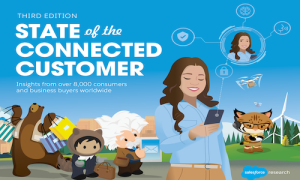Customer engagement is difficult to measure without the right tools, resources, and experience. When is the best time to engage with a customer? How can you avoid being too overbearing? There’s a fine line between effectively engaging a customer (and making a sale) and scaring them away.
Today, we are going to explore what customer engagement means, why is it important, and how insights from consumers can help us improve our engagement strategy.
What does customer engagement mean?
Before we get into the specifics, it’s important to understand the basics. What is customer engagement and why is it important? Well, to put it simply, customer engagement is an exchange between a customer/consumer (typically B2C or B2B) and an organisation. The ‘exchange’ can be a short conversation, a direct transaction, a negotiation, and more through different channels of communication.
Communication channels include:
- in-person communication
- mobile channels
- broadcast media
- written communication
- digital or electronic communication
There are many different communication channels you can utilise in your customer engagement strategy. For instance, you can advertise a new product release on the radio (broadcast media). The potential customer hears your ad and uses his/her phone to search for your brand (digital or electronic communication). The customer finds your website’s product page and makes a purchase; now you’ve made a sale. To clarify, this is a very basic example.
As more digital communication channels pop up (social media, mobile apps, etc) the buyer journey becomes increasingly more complex. Consumers expect to be engaged across a wide range of touchpoints.
It’s time to get your customers engaged
The ongoing Retail Renaissance has ushered in a parallel revolution in how brands connect with their customers. In this new climate, customer engagement is being transformed. It’s time to focus on the long-term; building relationships over time, across a range of touch points.
Companies are being challenged not only to refine the experiences they provide but also to re-imagine customer engagement from the ground up. And customers agree, with 54% believing that companies need to transform how they engage consumers. So how can companies rise to the challenge of providing connected, cross-channel customer experiences? What are the best ways to meet or exceed rising customer expectations?
Key in on the consumer paradigm
When looking at the third edition of the State of the Connected Customer report, one thing is strikingly clear: customers expect more from a company than just a product or service. And their opinion of a company is heavily influenced by the quality and breadth of that company’s engagement.
Customers want businesses to anticipate their personal needs, and then deliver immediate solutions across a variety of channels and/or touch points. The Amazon experience reveals insights into the power of targeted recommendations, one-click ordering, 24/7 customer service, real-time tracking, and one-day delivery. This type of engagement has redefined customer expectations, especially when it comes to convenience and speed. In fact, 59% of customers state that they’ll shift their business to Amazon if another company isn’t able to match their shipping costs and delivery times.
With such a high bar, companies can’t afford to be passive when it comes to building engagement. Getting a 360-degree view of your customers and providing cross-channel experiences is an expected standard. Whether it’s online, on the phone, via an app, or through a voice assistant, customers want to be able to connect with a business anytime, anywhere.
The three pillars of successful customer engagement
As reported by 8,000 consumers worldwide, we narrowed down and identified the three main pillars of successful customer engagement:
1. Personalisation
Customers expect tailored engagement based on past interactions.
2. Timeliness
Modern customer engagement happens in real time.
3. Connectivity
Connected devices and channels power customer engagement.
It’s clear that not only are the three pillars of successful customer engagement more important than ever, but a company’s values and ethics also have an impact on buying decisions. Trust is an important component of every B2C and B2B relationship. But the collection of data to improve customer engagement may not bode well for everyone. Businesses need to carefully consider their security efforts, as well as how to best use that personal data to deliver a tailored customer journey while still maintaining trust and loyalty.
Additionally, customers are increasingly expecting their experience to be augmented and improved by technologies and state-of-the-art innovations like the Internet of Things, AI, and voice assistants. Some companies are even dabbling in Augmented Reality. When businesses don’t go the extra mile, they can get left in the dust.
The stakes have never been higher when it comes to customer engagement, and having a proactive and forward-thinking digital transformation strategy is a blueprint for success. To learn more about measuring and improving customer engagement, download The State of the Connected Customer: Third Edition today!
3rd State of the Connected Customer
Get insights from over 8,000 consumers worldwide and discover how customer expectations of B2C and B2B companies have changed.

























